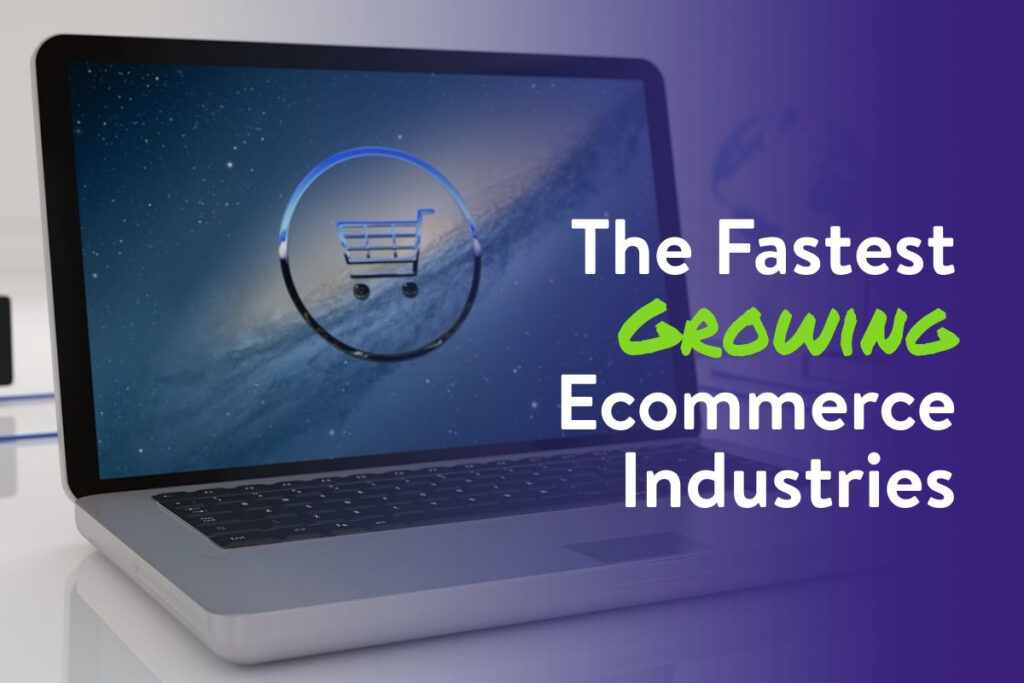The Fastest Growing Ecommerce Industries in 2022
Shopping via the internet is dangerously convenient. Ever-present access to an always-open marketplace (with every item, product and service always available and ready to purchase) means it so much harder for people to funnel money into their savings each month. To make matters worse, the nature of the internet means that these products tend to seek us just as often as we seek them. A quick scroll through Instagram or Facebook can lead to a spiraling spree of spending, all triggered by a targeted ad sneakily inserted into your social feed.
It’s hard to remember what life was like before next-day delivery, the convenience of shopping from a mobile device, or the ability to find incredibly-niche products at the drop of a hat. It should come as no surprise then, that the ecommerce industry is projected to keep growing substantially, with the total revenue estimated to be about $4.2 trillion by 2025.
But which parts of the ecommerce world are going to grow the fastest? Below, we’re going to take a look at the most successful ecommerce industries. We’ll delve into the reasons behind their growth, and set out what we think the future holds for them. Let’s begin.
Media and technology
Purchasing an electronic device can be expensive. And as with any pricey purchase, it’s always worth doing plenty of research before laying your hard-earned money on the line. Thankfully, shoppers are no longer reliant on salespeople desperate to urge them on. The internet gives them the freedom to browse without any added pressure from pushy store representatives desperate to make money on commission.
Tech review sites like CNET give the public instant access to advice about the latest gadgets, allowing them to feel more comfortable (and confident) about parting with their cash. And then there are YouTube channels such as Linus Tech Tips that break down complicated tech issues and thrive through the combination of ad revenue, merchandising, and affiliate marketing. In short, they monetize views, products, and expertise.
Ecommerce presents a perfect platform for vendors to sell their tech. After all, shoppers will often require detailed technical information before committing to their purchases, and they can much more easily acquire that information online. Being able to flick through tabs and compare specifications gives them the power to make fully-informed decisions, doing away with the all-too-common retail experience of being upsold unnecessary products.
Fashion
Fashion and ecommerce are a match made in heaven. From established retail chains and well-known high street names to independent online-only stores, the internet has given fashionistas all over the world a place to shop till they drop (without ever leaving their sofas).
In one sense, it’s quite surprising that online clothing vendors have achieved such success: after all, it’s always preferable for a clothes shopper to have the opportunity to try garments on before committing to buying them. However, returning unsuitable items is usually a hassle-free process, with most stores offering free returns via pre-paid postage. Some stores are even developing software to allow their customers to try clothes on virtually.
Online fashion retailers are also capable of offering larger ranges with more style options than shoppers would typically expect to find on the high street. Better yet, the whole experience of browsing for clothes online is personalized to each shopper. A store can cater to each customer’s tastes and preferences using their purchase and search histories.
Services like Depop and Grailed offer open marketplaces for buying and selling secondhand clothes. With the current trend towards sustainability and eco-conscious consumer choices, it’s likely that the popularity of these services will only increase as time goes on.
The rise of DIY fashion labels has also been spurred on by the democratization of ecommerce, with the barrier to entry lower than ever before. Website builders like Wix make it extremely easy for even the most inexperienced of web users to develop and launch their own fashion stores . And then there’s the ever-popular WordPress CMS, which provides more options for the type of customization that can work so well in the fashion industry.
While it’s true to say that WordPress isn’t the most user-friendly package (many key plugins must be acquired separately), it can prove to be extremely powerful. Using a PaaS solution (PaaS being platform as a service) can smooth out the rough edges: Cloudways is an option worth considering with its one-click rollout of fashion-centric themes (making WordPress approximately as simple as like Wix) and great scalability. If you know how to pick fashion trends and you have an instinctive understanding of how to create a website design that can catch the eye, you have a great chance of hitting it big.
Food and groceries
Online grocery deliveries were somewhat popular before the pandemic, but COVID-19 completely altered how the average person viewed the option of ordering staples through the internet. Having food and sundries delivered to your door was now no longer a simple matter of convenience. Instead, it had become a vital aspect of staying safe. Indeed, many began to view getting groceries online as a necessity, and for a long period of time it was difficult to book a delivery slot any less than 5 weeks in advance.
Thankfully, the era of panic-buying is behind us now, but consumer habits have been permanently changed. Many shoppers have become too accustomed to the convenience of scheduled deliveries to ever go back to the monthly supermarket pilgrimage. It isn’t just the ability to avoid busy supermarket aisles that makes this option so attractive, of course: it’s also the flexibility and time-saving power of having one big weekly shop from the store of your choice without needing to think about which is easiest to reach by car.
Of course, the online ordering process isn’t entirely without its own foibles: stock issues can lead to ordered items being unavailable, and those items can be swapped out for alternatives that aren’t quite satisfactory. In some instances, they’re don’t even bear any relation to the items they were chosen to replace. When you pass the task of gathering items to someone else, you must accept the possibility that they’ll get it wrong.
Regardless of the occasional delivery mix-up, though, the trend of growth in the online grocery sector is set to continue at a rate of 8.4%, making it one of the fastest-growing ecommerce industries around. And as supermarkets continue to adapt their operations, there’s no reason to think this trend won’t continue for years to come.
The convenience of ecommerce is unmatched: online shopping offers consumers an unprecedented degree of choice and prices that traditional high street stores are simply unable to match. As we head into the future, it’s inevitable that the ecommerce industry as a whole will continue its ascent. Given the role of ever-changing technology, though, only time will tell what the next leap ahead will entail.

